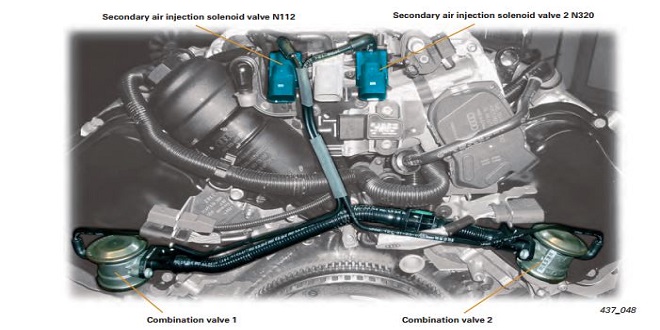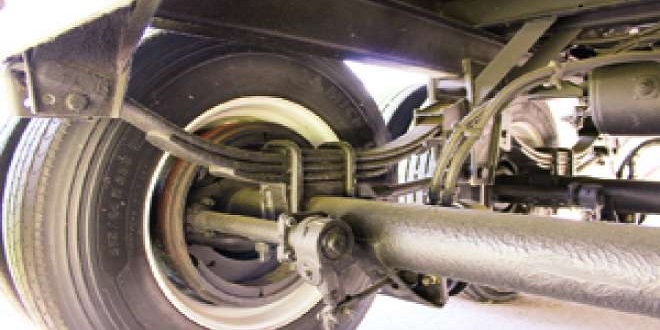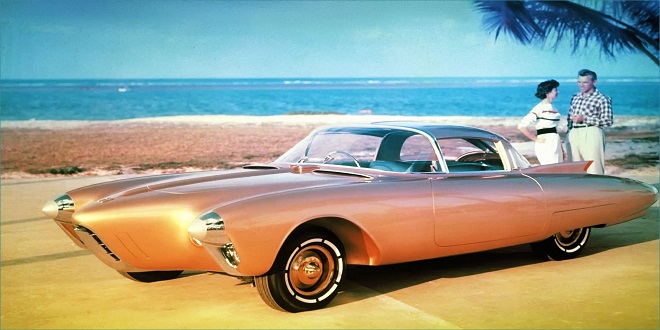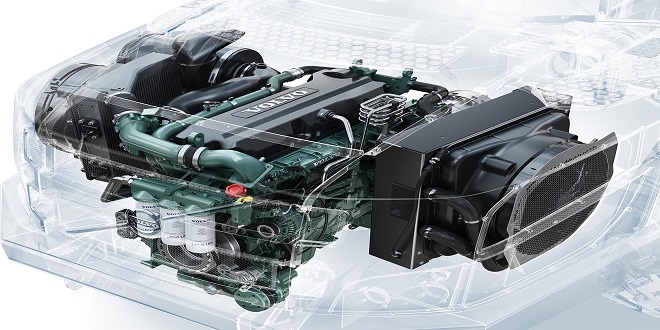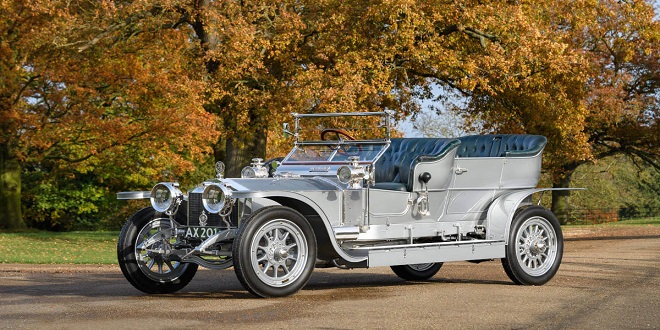The jet-propelled, chrome-plated erat
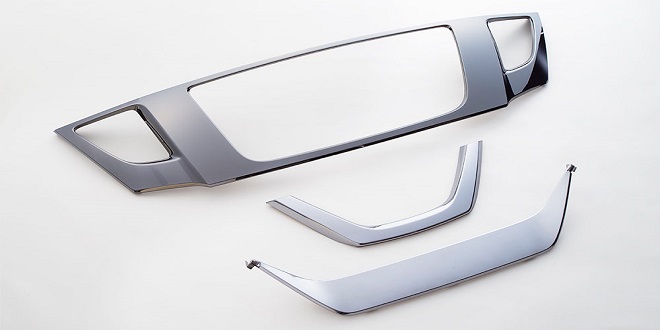
Throughout the whole of the 1950s, and despite post-war privations and fuel crises, the automobile became the center of attention like never before; car ownership was still not universal, and roads around the world were relatively traffic-free. However, by the close of the decade, exuberant motoring freedom would be on the way out, forever.
Carmakers in America highlighted the speed, luxury, and power of their products by harnessing aerospace imagery and chromium-plated decoration in about equal measure. The results were often breathtaking, sometimes absurd.
Across the Atlantic in Europe, with resources still scarce after World War II, the emphasis was on attractive economy cars, or else stirring sports and racing machines from Italy, Germany, and Britain.
There was also the prospect of emerging Japanese car industry. Cars were getting more user-friendly, too. They had to be, as multi-lane highways crisscrossed entire continents and demanded new levels of mechanical resilience for sustained high-speed driving over ever-greater distances.
ROVER “JET 1”
The crowds at the Festival of Britain exhibition on London’s South Bank in 1951 must-have sensed that Britain’s motor industry was on top of its game. For here was a car demonstrating Britain had the technology and ingenuity to keep pace with America and Europe.
It was Rover’s “Jet 1,” the world’s first gas turbine car—an open two-seater, using body panels that were recognizably adapted from the Rover 75 sedan, and offering seamless delivery of power to the wheels.
TRIUMPH TRX
It was known as the “new Roadster,” or by its nickname “Silver Bullet,” but for Triumph, the official and futuristic TRX proved nothing but trouble.
The smooth-lined two-seater, unveiled in 1950, was meant as a replacement for the Triumph 2000 Roadster, a delightfully old-fashioned model with its tiny cockpit, dickey seat, and huge, free-standing headlamps.
CHRYSLER K-310
Afrenzied round of trans-Atlantic dealing between America’s Chrysler Corporation and Italy’s Carrozzeria Ghia preceded the unveiling of this handsome coupé in 1952. Originally, Fiat sought Chrysler’s help in training its manufacturing technicians.
Then Chrysler realized that Italy’s car-styling brilliance could help to upgrade its image. Ghia and Pinin Farina both tendered for the business by building one-off bodies. Ghia’s car, the Plymouth XX-500 sedan, was no beauty, but Chrysler was impressed at the workmanship and modest cost. Soon Chrysler’s American-designed prototypes were brought to life in Ghia’s Turin workshops.
PEGASO Z-102
At the 1951 Paris salon, the debut of the Pegaso, an exclusive and sophisticated sports car from Spain, set the automotive world buzzing.
Designed by Wilfredo Ricart—recently back in his native Barcelona after nine years as Alfa Romeo’s chief engineer—the Pegaso, like so many of Ricart’s projects, was a magnificent folly.
On his return to Spain in 1946, Ricart joined ENASA, an arm of the Instituto Nacional de Industria formed by the Spanish government to counter a crippling shortage of trucks. Four years later, he directed his energies to the engineering department to create an advanced GT car.
BENTLEY R-TYPE CONTINENTAL
In the ration-book Britain of the early 1950s, the sight of a Bentley Continental must have slackened many a jaw. Here was one of motoring’s ultimates: the fastest genuine four-seater car in the world—it could top 120mph (193kph) effortlessly—and one of the most beautiful.
Shaped in Rolls-Royce’s Hucknall wind tunnel, Crewe’s flagship was an owner-driver super-coupé, its bold, distinctive fastback profile influenced, although no one would admit it, by the 1948 Cadillac 62 Coupé.
Last word
The talented Virgil Exner, heading up Chrysler design in the 1950s, was certainly a hard worker. The outflow of plans from his drawing board for exciting new cars appeared unstoppable, as did the capacity of Italian coachbuilder Ghia—his preferred contractor—to turn them into fully functioning prototypes.

